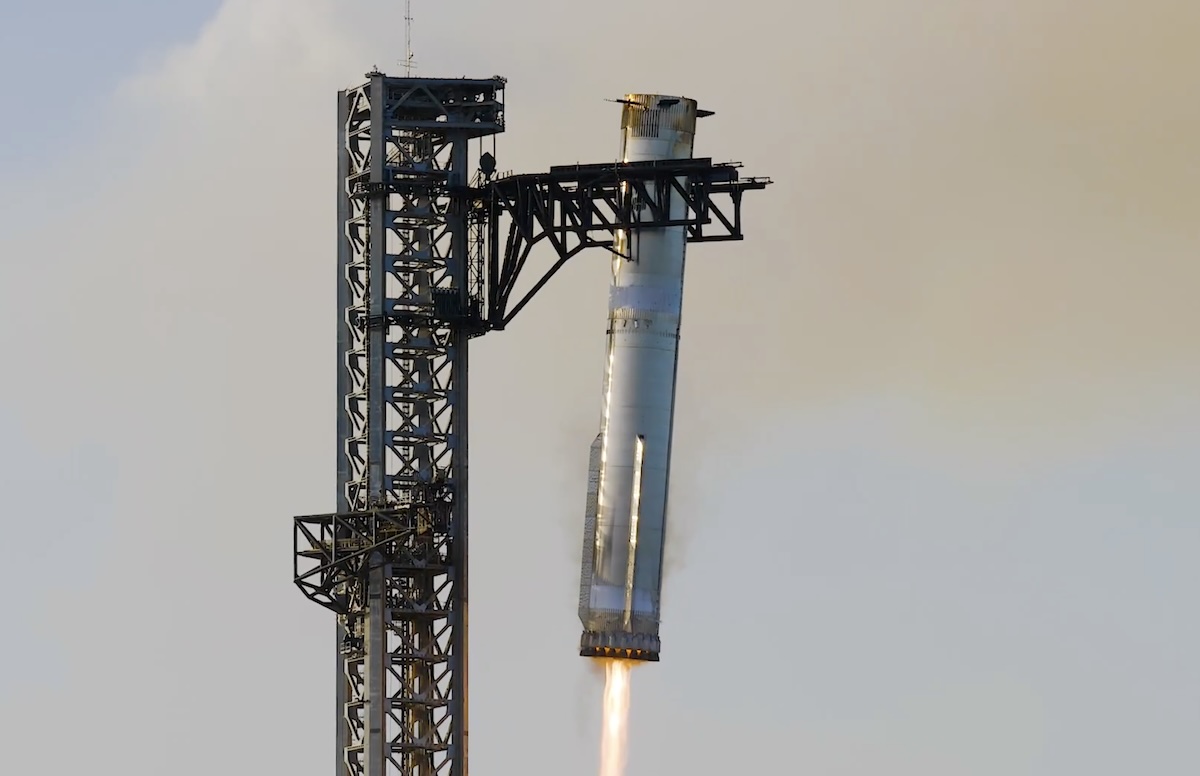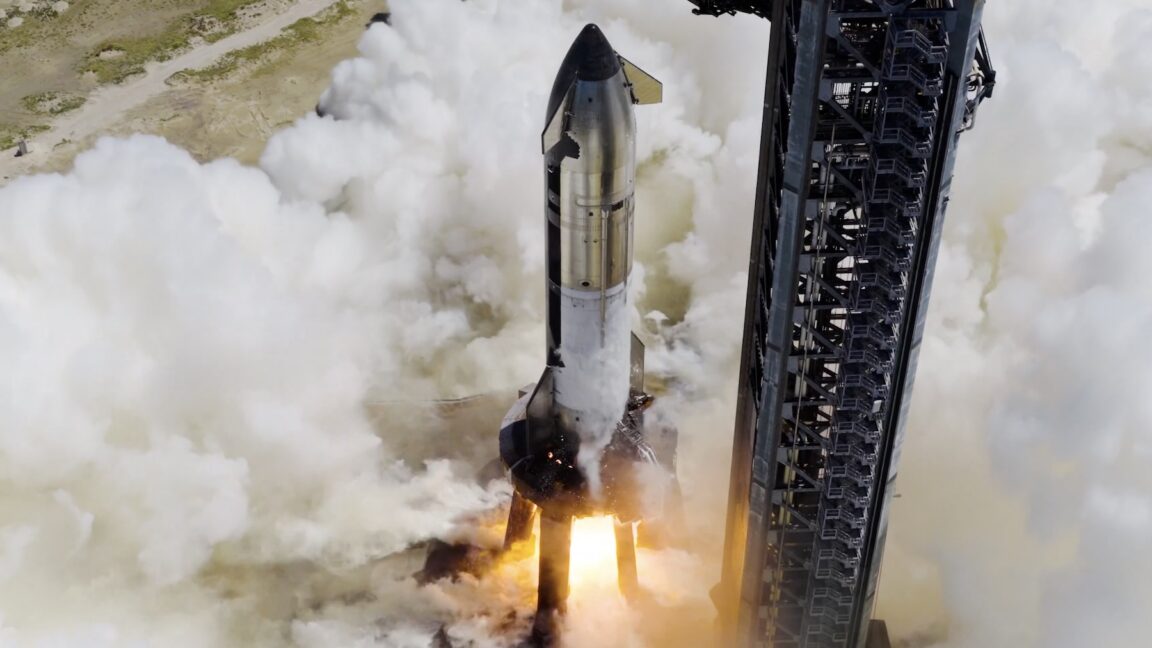This particular booster, numbered Booster 15, launched in March and was caught by the launch tower at Starbase after returning from the edge of space. SpaceX said 24 of the 33 methane-fueled Raptor engines launching on the booster next month are “flight-proven.”

The Super Heavy booster flying next month previously launched and was recovered on Flight 8 in March.
Credit:
SpaceX
Similar to the last Starship flight, the Super Heavy booster will guide itself to a splashdown off the coast of South Texas instead of returning to Starbase.
“Its primary test objective will be demonstrating a unique landing burn engine configuration planned to be used on the next-generation Super Heavy,” SpaceX said.
The new booster landing sequence will initially use 13 of the rocket’s 33 engines, then downshift to five engines before running just the three center engines for the final portion of the burn. The booster previously went directly from 13 engines to three engines. Using five engines for part of the landing sequence provides “additional redundancy for spontaneous engine shutdowns,” according to SpaceX.
“The primary goal on the flight test is to measure the real-world vehicle dynamics as engines shut down while transitioning between the different phases,” SpaceX said.
Stepping stone to Version 3
After Flight 11, SpaceX will focus on the next-generation Starship design: Starship V3. This upgraded configuration will be the version that will actually fly to orbit, allowing SpaceX to begin deploying its new fleet of larger, more powerful Starlink Internet satellites.
Starship V3 will also be used to test orbital refueling, something never before attempted between two spacecraft with cryogenic propellants. Refueling in space is required to give Starship enough energy to propel itself out of Earth’s orbit to the Moon and Mars, destinations it must reach to fulfill the hopes of NASA and SpaceX founder Elon Musk.
The first flight of Starship V3 is likely to occur in early 2026, using a new launch pad undergoing final outfitting and testing a short distance away from SpaceX’s original launch pad at Starbase. Gerstenmaier, SpaceX’s vice president of build and flight reliability, told a crowd at a space industry conference earlier this month that the company will likely attempt one more suborbital flight with Starship V3. If that goes well, Flight 13 could launch all the way to low-Earth orbit sometime later next year.

